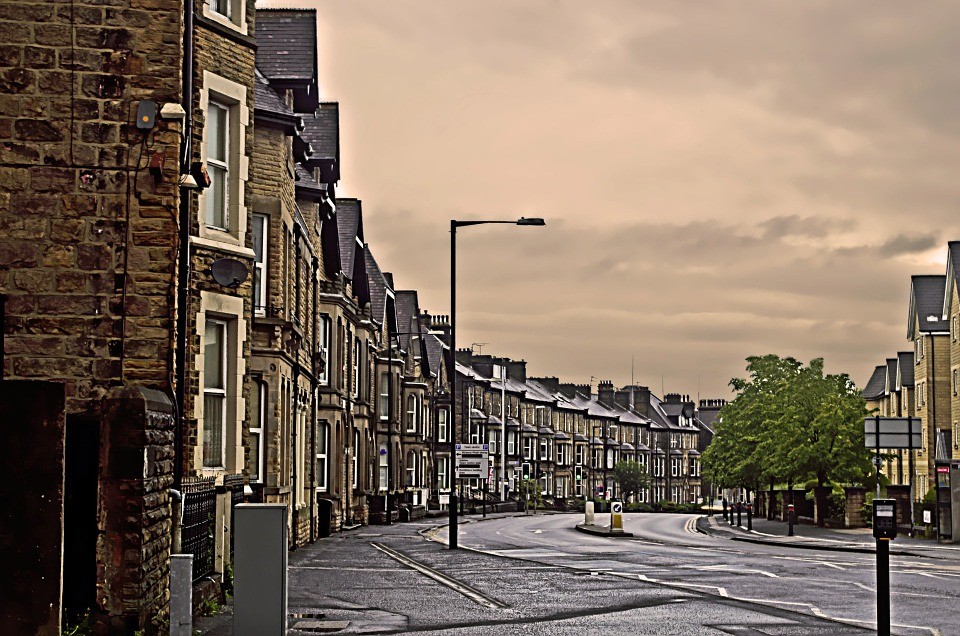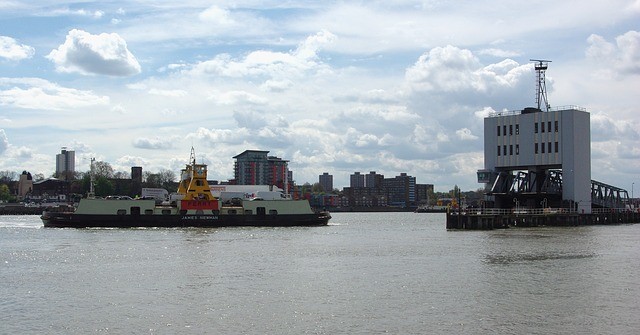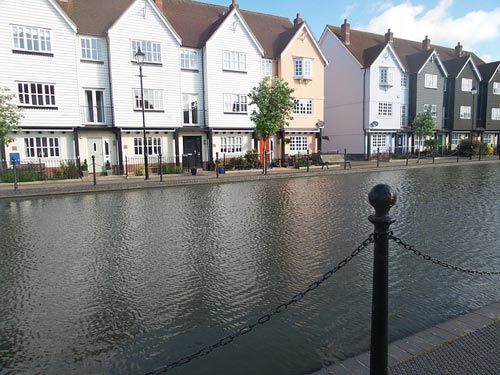Home-movers warned to act now to move by Christmas
Average asking prices of newly-marketed property show a fall of 2.3% in August as new sellers launch a ‘late summer sale’, according to Rightmove.
Slightly bigger than the drop last year, this decrease likely stems from the more subdued market in London and the South East. With the two regions excluded, the rest of the country would have a monthly drop of 1.5%. “Sellers who come to market in the peak holiday month often have a pressing need to sell and price down accordingly, and are offering ‘summer sale’ prices to entice holiday-
distracted buyers,” said Miles Shipside, director and housing market analyst at Rightmove. Continue reading
Midlands property market thrives while London market cools
Despite a significant drop in purchase activity in Central London, landlords are still picking up property in the East and West midlands, according to Paragon.
In a recent survey of over 680 landlords carried out by BDRC on behalf of the firm, it was revealed that buy-to-let mortgages for property purchases have fallen by around 40% overall since 2015.
Landlords in the Midlands, however, seem to be bucking the trend, amplified by strong economic growth in the region, a thriving higher education sector and successful regeneration of Birmingham.
There is also a boost from the relocation of head office and operational functions outside of London to Birmingham by financial service firms – including HSBC and Deutsche Bank – with heightened activity ahead of the Birmingham 2022 Commonwealth Games.
What’s more, 42% of landlords in the East Midlands and 33% of landlords in the West Midlands said tenant demand was increasing, compared with just under a quarter of all landlords (24%) who indicated rising demand. Rental yields for landlords operating in the region were also strong, with landlords in the East Midlands reporting average yields of 6.7% and those in the West Midlands achieving yields of 6.2%.
The research also found that landlords operating in Central London were least likely to be buying property, with a net 16% saying they had sold some property in the first quarter. “These findings highlight a big regional difference in landlord experience and buying habits,” said John Heron, managing director of mortgages at Paragon. “Some Central London landlords appear to be scaling back a little while landlords in the Midlands continue to invest on the back of a positive outlook.”
Female landlords still struggle to close the gender pay gap
The income women earn from property investment is lower than that of their male counterparts, according to new data from Knight Knox.
The annual survey of landlords across the UK has highlighted the difference in average rental income between male and female landlords, with men receiving £24,050 annually compared to annual income of £22,550 for women. Continue reading
New breed of property investors being ushered in by changing marketplace
A new generation of property investors is being created by a rise in the number of affordable homes coming to the market and the increasing power of the digital property market. That is according to auction firm John Pye Property.
Recent research has suggested that a wider range of ‘appealing’ properties are available now in comparison to five years ago, which has in turn increased the proportion of fledgling investors getting involved in the market.
Richard Reed, head of property at John Pye Property, said that the concept of a “stereotypical” property investor is no longer accurate, with innovations in technology opening up the market to a totally new audience. “The image of the middle-aged man in a suit with a medium-sized portfolio is giving way to a new breed of investor,” Reed said.
London the region with the highest rent rises for the first time in four years
London was the region with the highest annual rent rises for the first time since the fourth quarter of 2014, according to new analysis by Rightmove.
In Q2 2018 asking rents in Greater London rose to an average of £2,000 per month, fuelled by a shortage of new rental properties coming to the market in the capital (down by 3.5% on the year before). This has helped to push the annual rate of London asking rents to 3.4%, its highest rate for three years.
Outside London, rents increased nationally by 2.7% over the second quarter, broadly the same as the 2.8% increase in the same quarter last year. The annual rate has dropped to 0.7%, dragged down by flat annual change in the South West and a negative rate of -0.4% in the South East. In contrast to London, where a lack of new properties is thwarting renters, new listings are up 2.4% outside of the capital, offering more choice to tenants.
Investors are seeking low cost, high yield properties
Investors are increasingly searching for cheaper and higher yielding properties despite buy-to-let (BTL) investments offering attractive return rates, according to a study commissioned by The Mortgage Lender.
The special report, authored by the UK’s leading housing economist, Martin Ellis, covers the UK economy, the private rented sector, the UK housing market, buy-to-let mortgages, the impact of tax and regulatory changes, forecasts and prospects.
It predicts that interest rates will rise by a quarter in the next few months, with house price growth slowing to between 2 or 3% a year by the end of 2018.
Commenting on the contents of the report, Peter Beaumont, deputy chief executive of The Mortgage Lender, said it also looks at the factors that are likely to influence landlords’ investment choices over the coming years as well as the macro and micro economic environment for buy-to-let investors.
“It highlights the need for a flexible and competitive buy-to-let mortgage market to facilitate continuing investment in a sector of the housing market that has grown in significance as home ownership has declined and demand for good quality residential property has increased,” he added.
According the report, the key factors impacting the buy-to-let market are as follows:
Property still seen as best income source for retirement plans
Property is still top choice when it comes to long-term investment, according to findings from a survey carried out by Perrys Chartered Accountants.
Despite recent tax changes affecting landlords – including the extra 3% stamp duty surcharge and the phasing out of mortgage interest tax relief – the research found that 35% of the UK population are most confident in property compared to any other investment, including pensions and ISAs.
The survey, which took the views of 1,000 people, was conducted to ‘raise awareness of the importance of planning for the future’. It revealed that 8% are relying on the equity from their property as their main source of retirement income.
The UK’s housing wealth passed the £6 trillion milestone for the first time last year, research by Halifax found, with most of the property wealth concentrated in London and the South East. The average net equity worth – the difference between the value of a home and the outstanding mortgage – is currently estimated to be £247,233.
With research suggesting that approximately £25,000 per year is needed by retirees to maintain a similar lifestyle in retirement, equity from a single property could offer up to 10 years of income. This, though, does not take into account other costs for releasing the equity – such as estate agency and legal fees or any stamp duty charges – which could stretch into the thousands.
What’s more, with an average life expectancy of 81 in the UK, banking on property equity from a first home could mean there is a potential income shortfall of at least six years. With this in mind, Stewart Pope, chief executive at Perrys Chartered Accountants, is encouraging people to plan ahead and think about the prospect of changing circumstances. The rising costs of residential care (more than £29,000 per year on average) should also be factored in – not just the hopes to keep an existing lifestyle in place.
“Whilst maintaining your current lifestyle will always be the first consideration, it is also important to be aware of the other possibilities that life can throw at you, such as ageing relatives, long-term illness, or the chance you might need residential care in the future,” Pope said.
“The recent introduction of auto-enrolment for employee pensions is hoping to address some of the issues we face as an ageing nation. However, only a quarter of those aged between 35 and 54 felt confident in pensions as a future investment with 40% saying that putting their money into property would be their first choice.” He added: “But the Government’s latest changes to tax regulations and the significant increase in the stamp duty charges paid on second homes are making property investment a more difficult and expensive prospect for many.”
Pope said people should take a look at their existing assets to see how they could maximise potential for the future. “With the right advice and some effective tax planning you could find that this makes a long term difference to the shape of your financial future,” he said.
Legal & General announces details of its largest Build to Rent site
Legal & General – one of the biggest players in the emerging Build to Rent sector – has announced that it has exchanged on its largest Build to Rent site to date.
The site, located in Woolwich, is the operator’s third Build to Rent scheme located in the capital following developments in Walthamstow and Croydon. A brownfield site, known as Macbean, the Build to Rent development is located near Woolwich Arsenal Overground Station in an area which Legal & General says is becoming ‘increasingly aspirational’.
Subject to planning approval, the scheme is projected to deliver over 650 new homes, together with 21,000 square foot of commercial space and a new public square. The development will comprise both private and affordable rental homes, split between London Living Rent and Discount Market rent.
Woolwich is undergoing ‘intensive regeneration’ thanks to extensive investment in housing, transport, retail and leisure. There is, however, a ‘chronic’ housing shortage in the London Borough of Greenwich location – with approximately 3,300 new homes required each year to meet demand.
Legal & General now has a pipeline of around 3,000 Build to Rent homes across nine nationwide schemes. It hopes to have 6,000 homes in planning, development or operation by the end of 2019.
“Macbean is another great example of Legal & General investing in a location with significant urban regeneration potential and providing large scale sustainable rental schemes which will have a positive long term socioeconomic impact, ” says Dan Batterton, Build to Rent fund manager at Legal & General Investment Management Real Assets. “Given the notable infrastructure developments in the area, such as Crossrail, it has been a target location for us to expand our BTR offering and we remain firmly on track with our growth plans.”
James Lidgate, director of housing at Legal & General Capital, adds: “As the UK’s population continues to grow and renting becomes a tenure of choice, delivery of high density, high
quality developments with vibrant communities is becoming more and more important.”
“This latest development is another step forward for Legal & General in its ambitions to tackle the severe housing shortage the UK is facing, helping to address the significant supply
and demand imbalance – both in the Borough of Greenwich and across London as a whole.”
Revealed: areas where prices have grown by more than 250% since 2000
There are 19 towns and cities that have witnessed property prices growing by more than 250% since the turn of the century, according to research carried out by online estate agent HouseSimple.com.
Southend-on-Sea was found to be the UK’s top property hotspot of the 21st century so far, with average property prices in the Essex coastal town soaring by 287.1% since 2000.
According to Land Registry figures, Southend-on-Sea – famed for having the longest leisure pier in the world – has seen property prices rise faster than any other town or city outside of London since January 2000. But it’s far from the only place that has seen phenomenal growth, with the East of England particularly booming. In fact, four out of five of the biggest price growth areas outside of the capital can be found in the East of England, with Cambridge (279.2%), Luton (276.7%) and Basildon (274.7%) also all seeing average property price growth of 270% or more.
When London boroughs were included, Waltham Forest in East London won out, with astonishing growth of 364.9% since the turn of the century. This made the popular commuter hub the top performing area in the UK when it comes to property price growth. To put together its research, HouseSimple.com identified 19 UK towns and cities that have experienced average price growth of at least 250% since January 2000. Only two towns from the north of England – Salford and Sale – made the grade, with both these locations found in Greater Manchester.
Other towns and cities which have enjoyed exceptional price growth since January 2000 include Bristol, Corby, Hastings, Leicester, Brighton, Lincoln, Slough, Norwich and Canterbury.
Unsurprisingly, London has seen the biggest gains in property prices in the last 18 years, with the eight largest house price growth areas all accounted for by London boroughs. All saw average property prices increase by more than 300% since the beginning of the Millennium. As well as Waltham Forest, Hackney – another Olympic borough boosted by the 2012 Games – has seen prices rise significantly, up by 339% since 2000.
Lewisham, Southwark, the City of Westminster, Newham, Barking and Dagenham and Haringey have also seen huge price growth in the past 18 years. “While London is the clear winner when it comes to house price growth since the turn of the century, prices have boomed in many areas outside the capital as these figures attest,” Sam Mitchell, chief executive of HouseSimple.com, said.
“What’s more impressive is that in the middle of this 18-year period, we experienced one of the worst recessions this country has ever seen. It shows the resilience of the UK property market.”
He added: “During this period, London property prices stabilised thanks to an inflow of foreign investment, and then started to rise again 18 months after the height of the Credit Crunch. However, that wasn’t the case across large swathes of the country, where the recovery process was far more protracted.” Mitchell said the property price growth picture is a totally different story today. “As London’s property market shows signs of running out of steam, we are seeing strong growth in the north of England. Eighteen years from now, the UK’s property hotspot landscape
could well look entirely different.”
Property investment – where are the UK’s 2018 hotspots?
Investing in property is always unpredictable, especially as it’s difficult to pinpoint the best locations for investment – who would have known in 2010 that an area such as Brixton would suddenly become such a hotspot?
Inflated house princes in London and the South East have become the norm, and now it looks as if many investors are looking up North, but which specific towns and cities should be considered?
Manchester
Manchester is one of the UK’s fastest growing cities and has seen a huge increase in property investments in recent times. Estimates for 2018 predict it will be a great year for investment in the area. Recently, Manchester has undergone quite a few regeneration projects and now several businesses have made it their home, including HSBC and Barclaycard. Because of this, average yields are extremely high (often around the 7% mark) in areas such as Fallowfield and Chorlton.
The city has also been mentioned in PwC and Urban Land Institute’s ‘Emerging Trends in Real Estate Europe’.
Liverpool
Liverpool is another city benefiting from domestic and international investment as well as large-scale job creation. The Merseyside city hasn’t experienced major house price growth in the past decade, unlike other areas in the North, but there are several signs that show property price growth is beginning, and 2018 looks to be the time to buy.
Currently, Liverpool has the UK’s fastest-growing economy, with flagship investment projects like the £5 billion Liverpool Waters scheme which has seen the transformation of a 60-hectare brownfield site into five new neighbourhoods, making the city a lucrative place to invest.
Nottingham
2018 also looks to be a great year to invest in the home of Robin Hood, as its predicted that Nottingham will benefit greatly from the HS2 development.
Emoov.co.uk estimates that over the next 10 years Nottingham will top the tables for average house price growth with areas such as West Bridgford and Bingham proving very popular.
The transport developments in the city have been voted as one of the best in the UK and as the student population in the city grows, Nottingham is predicted to experience a staggering increase in property prices.
Birmingham
Another hotspot in 2018 to look out for is Birmingham, as a lack of supply and high demand has pushed rental prices up. Its £90 billion regional economy is on track to grow dramatically as HS2 will slash journey times from London to just 50 minutes.
HSBC has been drawn to setup a new headquarters in the city as well as HMRC who are setting up a new regional office.
With Brexit in mind, many large companies are looking to relocate from London’s inflated property market to Birmingham, all making the city as a hotspot for 2018 property investment.
Croydon
As mentioned, it looks like focusing North seems to be the current trend, yet London still offers some areas which display signs of a smart investment like Croydon. Although Croydon has experienced an increase in house prices, it still remains behind standard London prices. Yet, with new investments such as Boxpark and plans for a Westfield shopping centre, Croydon is soon to follow in the footsteps of Brixton.
One estate agent claims that It’s only a matter of time before flats in Croydon start selling for over £1 million, as one three-bedroom penthouse apartment in the area is currently on sale for £875,000, a new record for the area.
What factors should you consider when investing in property?
When investing in a property there are many factors you ought to consider, such as the location and the mortgage provider, but the property type is also important. In 2018, Upad has found that two-bedroom houses currently offer the best rental yield, and if you’re in the market for a flat, two bedrooms is also the way to go.
When looking at which type of property has increased in value the most over the past 20 years, Zoopla found that terraced houses appear to bring in the highest capital gains, whether you plan to sell up now or in a decade or two.
They were also able to see trends showing that detached houses could give you reasonable capital gains in the short to mid-term but may fall behind other property types over longer periods of time.
So ultimately, while looking at the right type of property, it seems as if in 2018 looking North is the best way forward for property investment, although London still offers the opportunity to make some smart investments.
It will be interesting to see which areas prove as the smartest investments; only time shall tell.









